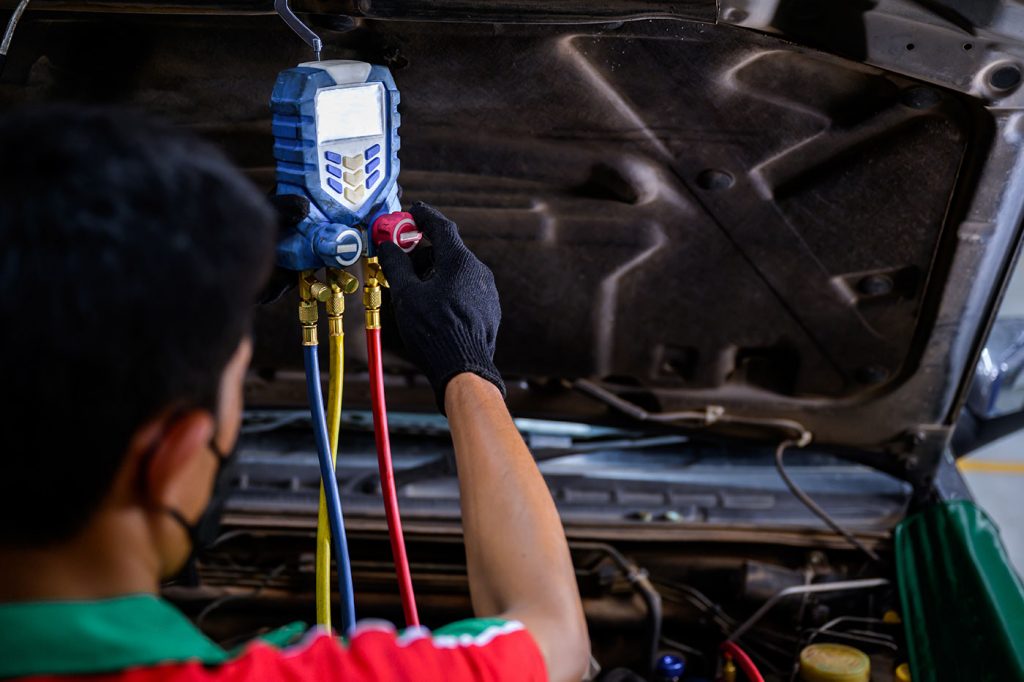
Ensuring the compressor is properly lubricated with the appropriate kind and quantity of oil is crucial when putting a new compressor on a vehicle.
Making sure the level of oil in the air conditioning system stays at the proper level is the goal of oil balancing a compressor.
The quantity of oil in the new compressor should be taken into account before beginning the process. There may be no oil at all, a half charge of oil, or a full charge of oil (8 oz./236 mL). If the replacement compressor contains oil, it must be taken out and correctly reinstalled in order to balance the system.
The article provides a guide for A/C compressor oil balancing.
Instructions for Oil Balancing
Always refer to the instructions that came with the compressor or your vehicles’ manual when performing a compressor oil balance to determine how much oil you need to add to the compressor before mounting it on the vehicle.
Add Correct Amount of Oil
Add the appropriate amount of oil. The majority of the time, oil balancing entails measuring and draining the oil from the malfunctioning compressor before adding a predetermined amount of fresh oil to the replacement compressor. The compressor manufacturer specifies how much oil should be put to the compressor.
Pay Attention to Oil Viscosity
Take note of the viscosity of the oil. Oil viscosity should be considered in addition to applying the appropriate amount of oil to a replacement compressor. Use the oil viscosity that the compressor’s manufacturer recommends. When lighter weight PAG 46 is used instead of greater weight PAG 150 oils, the compressor may operate noisily and wear out sooner than it should.
Rotate the Compressor Clutch
The compressor clutch should be turned. A helpful maintenance advice is to crank the compressor clutch at least four turns after adding the oil to the compressor before installing the compressor. This does two things. Rotating the clutch minimizes initial torque when the clutch is first engaged and circulates oil throughout the compressor, lowering the risk of compressor failure from dry bearings. Some compressors have a high initial torque by design.
When the compressor is turned on, if the torque is strong, it may cause the compressor drive belt to break or the engine to stall. Typically, a spanner wrench or your hand are used to turn the compressor clutch. The compressor turning tool is another alternative to the spanner wrench. The pulley and clutch are the same thing when it comes to direct drive compressors.
The Turning Tool
The turning tool serves the same purpose as a spanner wrench, but it is mounted to the clutch’s threaded hub. Use a wrench to spin the tool and clutch after the turning tool has been mounted. The turning tool can be used on some clutches where the clutch design prevents the use of a spanner wrench or where a good grasp by the spanner wrench is impossible. The turning tool offers an easier technique of rotating the clutch and may be used on or off the vehicle. It can also be used in place of the spanner wrench.
